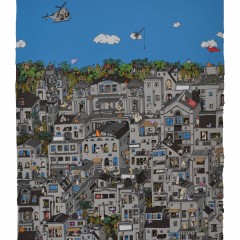[Irena discovers that the difference in subject matter indicated by this show’s title is not so pronounced, after all. — the Artblog editors]
The latest midsummer exhibit at Hooloon Art is a showcase of two flavors presented on the same dish. Suburbanites and Urbanites offers the works of self-taught painter Andrea Joyce Heimer, and those of RISD graduate Aaron Zulpo, as the two artists delve into a world of subtle voyeurism and deconstructed realities.
Familiarity in both presentation and subject
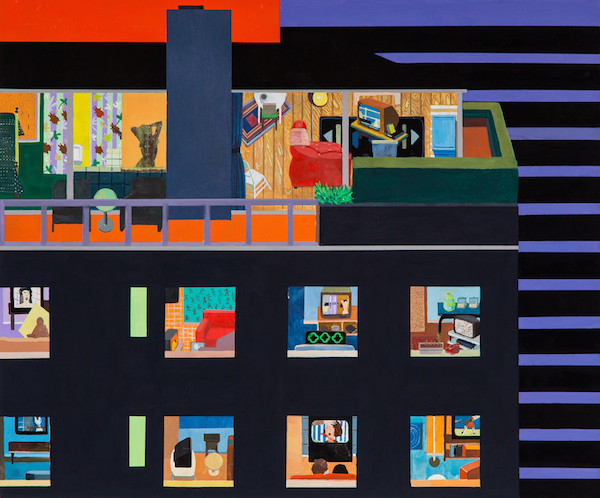
The show’s pieces hang in no particular arrangement or timeline, so that the works can be viewed as a mixed narrative rather than remaining isolated in their own corners. The gallery’s owner and director, Michael Lieberman, hoped to achieve a sense of duality and conversation between Zulpo and Heimer in this accessible and non-intimidating show.
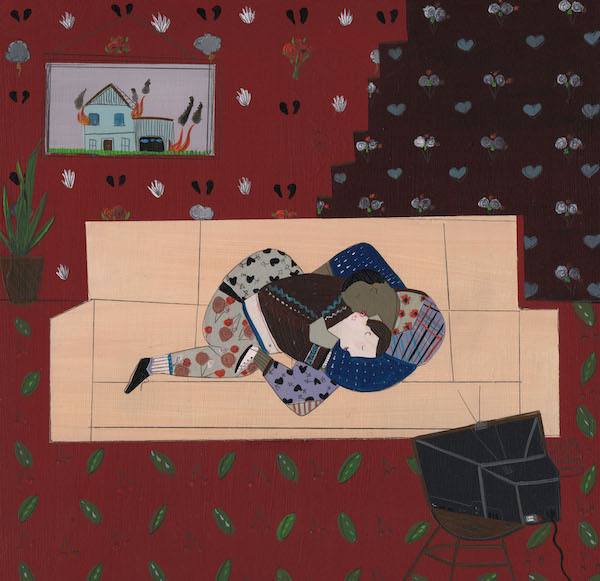
One of the most important visual elements in the gallery space is the immediately noticeable labels of Andrea Joyce’s Heimer’s paintings. To be clear, the “labels” are Heimer’s titles, written directly on the walls in ink and attached to each corresponding piece via a dashed line. The titles are long-winded, flowing, and crucial to the works themselves. Each one is an unconventional piece of mini-poetry. Titles like “Otto Johnson Had A Business Where He Would Steal Our Bikes, Paint Them, Then Sell Them Back To Us & We Thought He Was Dreamy In A Way” remind the viewer that the painting itself is only a small part of a narrative.
Heimer, a self-taught artist, creates suburban fairytales with her small-scale, carefully detailed pieces. Each painting is a unique gem and must be examined for longer than just the initial pass-by glance, as these works contain whimsical details and a tenderness that few other painters in the Western tradition employ. Heimer’s art is almost reminiscent of Indian miniature painting, with its fine brushwork and playful detailing.
Heimer grew up in the suburbs of Montana; she touches on simple memories and forgotten feelings of adolescence (such as in “Second Date, First Touch, Downstairs Family Room. This Scene Played Out In Houses Up And Down My Street”) and family life. The “surrealness” of her works lies solely in their blunt colors and uncertain perspectives–however, the captured emotions are as real as the seemingly mundane situations.
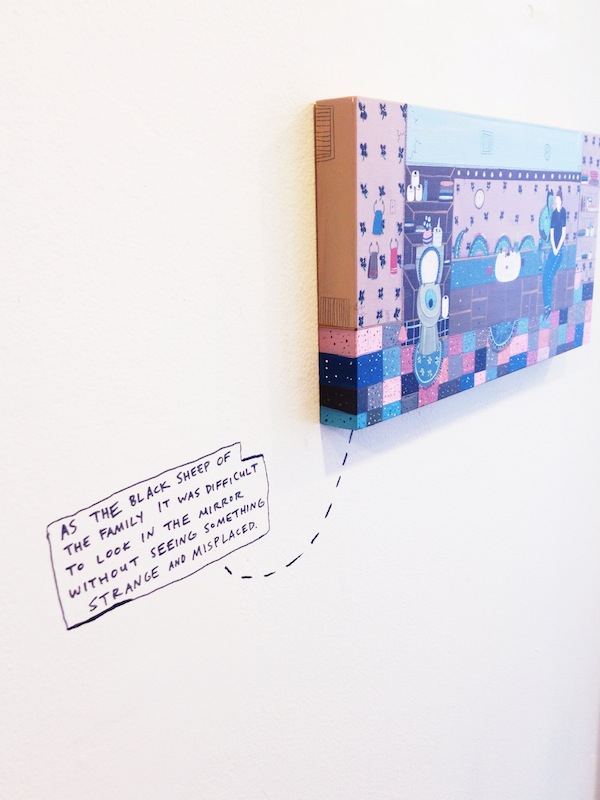
Defining the viewer’s role
Aaron Zulpo’s works may seem at first to be ideal candidates for contrasting Heimer’s suburban milieu; Zulpo shows scenes of urban life, mostly deconstructed city buildings and their inhabitants.
The artist is a Brooklyn resident, and graduated from the Rhode Island School of Design in 2008. His paintings mix public and private and range from documentary-style narratives to depictions of city life behind the scenes that make his subjects inaccessible, yet wildly intimate. Zulpo’s pieces are slightly more “definite” than Heimer’s, with far less of a folk-art mentality; however, his whimsicality, though more subtle, is just as crucial.
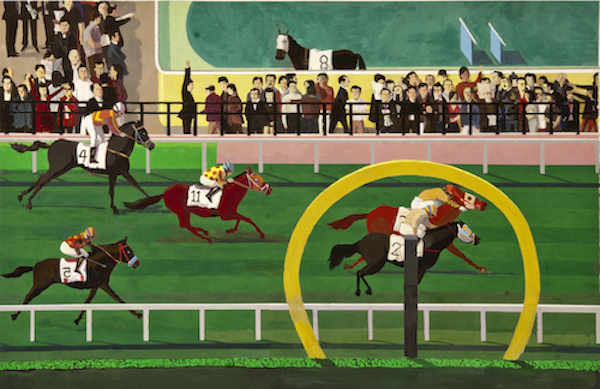
The contrast in the show’s title may trick gallery audiences into believing Zulpo and Heimer differ in their approach and the subjects they depict. However, on closer inspection, the works are far more intertwined. The role of the viewer is critical to these artists, both of whom play around with the idea of observation.
Zulpo’s paintings make viewers feel as though they are on the outside looking in, whether it is on the field during a football game, or in front of a lit-up apartment building. The physical position of the audience is unclear, and Zulpo purposely makes it impossible for us to view each scene on a realistic plane. Similar to Mark Rothko’s early paintings in the Subway Series, where audiences were forced to view commuters from strange angles and were in no way “participating” in the events of the pieces, Zulpo paints his subjects behind a viewing glass.
Heimer’s works and unconventionally poetic titles, on the other hand, present the viewer with a single still frame from a larger story. The rest of the story, or memory, lies solely with Heimer. We, the viewers, find ourselves to be quietly intruding on a moment–and though we are more “included” within the moment than in Zulpo’s urban landscapes, we are neither acknowledged nor given a seat around the dining room table.
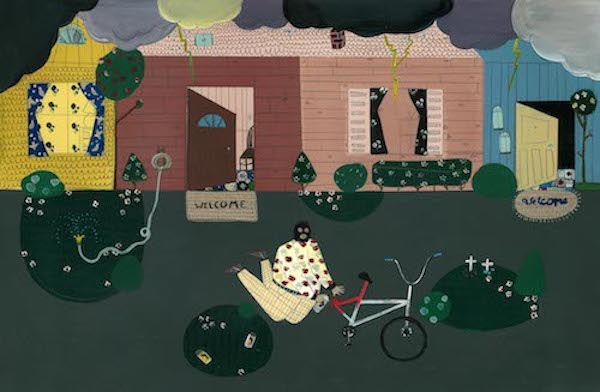
As the Philadelphia summer draws to a close and the days become shorter, we may find ourselves inadvertently peeking into brightly lit living rooms as we walk down a darkening evening street toward home; the sights we may see as a result of this unintentional surveillance could very well be something out of either Zulpo’s or Heimer’s imaginative pieces. Suburbanites and Urbanites is a show devoted to capturing and maintaining these forgotten and simple moments.
Suburbanites and Urbanites is on view at Hooloon Art in Old City Philadelphia until August 10, 2014.



